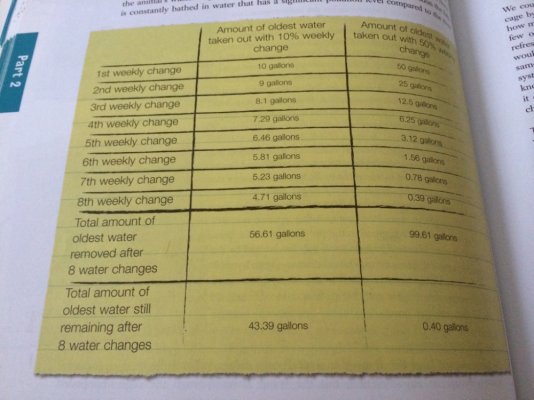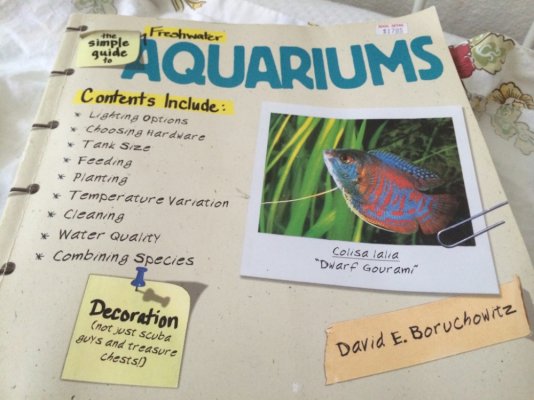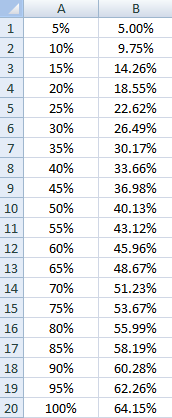enrgizerbunny
Aquarium Advice Addict
I think the biggest thing that water changes give you is nice clear water.
I have an aquaponics system that has not had a water change in about a month. Before that it was 2 months. I top off about 10 gallons a week lately. My nitrates are 0 because the plants remove every single bit of them., but my water has a brown tint to it. I don't really care about this because tank is more like a pond. This proves that yes, if you remove the nitrates with plants or another man's you can forego water changes, but there may be some undesirable results.
+1 plastic container and submersible pump, that's what I do, and I hang my siphon out the window.
As far as the "ponds don't empty half their water weekly"comment...
While the turnover rate varies from pond to pond, MOST ponds have some sort of water exchange due to the water source (stream, spring) constantly adding water to the pond and it draining through the dam. This turnover rate weighs in heavily when considering what kind of fish populations the ponds can support. Ponds are also not as densely stocked as our aquariums so this is a really unfair comparison.
Sent from my SCH-I435 using Aquarium Advice mobile app
I have an aquaponics system that has not had a water change in about a month. Before that it was 2 months. I top off about 10 gallons a week lately. My nitrates are 0 because the plants remove every single bit of them., but my water has a brown tint to it. I don't really care about this because tank is more like a pond. This proves that yes, if you remove the nitrates with plants or another man's you can forego water changes, but there may be some undesirable results.
+1 plastic container and submersible pump, that's what I do, and I hang my siphon out the window.
As far as the "ponds don't empty half their water weekly"comment...
While the turnover rate varies from pond to pond, MOST ponds have some sort of water exchange due to the water source (stream, spring) constantly adding water to the pond and it draining through the dam. This turnover rate weighs in heavily when considering what kind of fish populations the ponds can support. Ponds are also not as densely stocked as our aquariums so this is a really unfair comparison.
Sent from my SCH-I435 using Aquarium Advice mobile app



